Architecture | Artek | Design Calendar | Designer | Producer | Product
In 1936 Aino Aalto opined that "homes can be given interior design in other ways than before - not by buying expensive complete suites of furniture, but by concentrating on low-cost furnishings which can be used - with the aid of flowers, carpets, drapery and colours - to create hitherto more practical and more comfortable homes."1
A break not only with the understandings, the ways, of generations long past in terms of what constitutes appropriate furniture; but also a break with the ways of many of the functionalist modernist practitioners of the immediately preceding decade in terms of what constitutes an interior design.
And an opinion, an understanding, which underscores why Aino Aalto stands as an important moment in the (hi)story of interior and furniture design.....
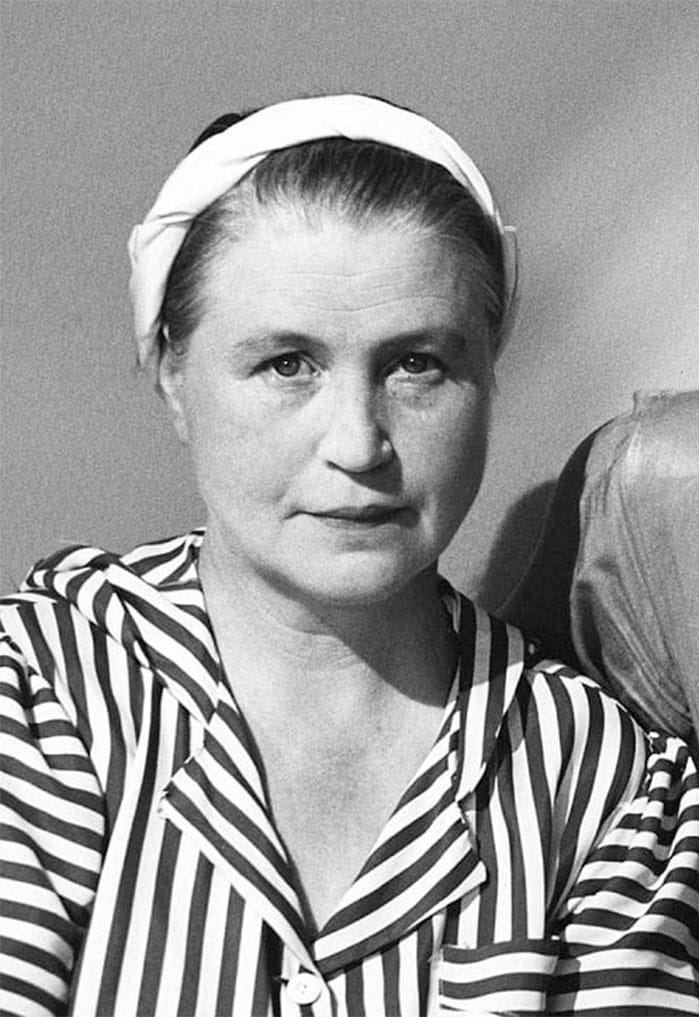
Aino Maria Mandelin was born in Helsinki on January 25th 1894 as the 11th of 13 children to Johannna and Juho Mandelin2, her father a senior conductor with the Finnish state railway, her mother a housewife, and the young Aino raised, by all accounts, in a (relatively) comfortable, nurturing, working class environment.
In 1906 family Mandelin became family Marsio3 and in September 1913 Aino Marsio enrolled to study architecture at Helsinki's University of Technology, one of three females to enrol that year4, and, importantly, not the first females to study architecture in Finland: the first females to study architecture in Finland having been admitted in the late 19th century, with Blenda Nyberg in 1901 being Finland's first female architecture graduate.5 Thereby making Finland one of the first countries to formally open up architecture studies to females.
Alongside her academic studies Aino Marsio also completed various, compulsory, work placements during her time at the University of Technology, including spending time as a bricklayers assistant on the site of the new Lutheran Congregation Building in Helsinki, and a two and half month apprenticeship at the Hietalahti carpentry works and furniture factory, in addition to working for the landscape and garden architect Bengt Schalin, one of the leading, and most important, horticulturalists in early 20th century Finland. And thus spent a varied, and we'd argue meaningful, time at the University of Technology.
And not just at the University of Technology: in 1917 Aino Marsio realised her first recorded furniture design project, a bedroom suite commissioned as a wedding present for her sister Liisa and her new husband Artturi Mikkonen, and, apparently, commissioned and built by the groom's carpenter father.6 And in 1919 Aino Marsio was a founding member of Tumstocken, an association of female architects established not only as a platform for exchange and discussion, but also as a counterweight to the, more or less, exclusively male Architect's Club who dominated the architectural discourse in early 20th century Finland. As so oft, one should never confuse females being allowed to study something with gender equality in that profession.
After, one presumes, a delay in her studies on account of the Finnish Civil War of 19187, Aino Marsio graduated on January 20th 1920, and thus less than a week before her 26th birthday. And some 16 months before a certain Alvar Aalto graduated from the same alma mater.
Following her graduation Aino Marsio initially worked in the office of Oiva Kallio in Helsinki before moving north in 1923 to Jyväskylä where, after a brief spell in the office of Gunnar Wahlroos, Aino Marsio joined in early 1924 the grandly titled Arkkitenhtuuri- ja monumentaalitaiteen toimisto Alvar Aalto - Office of Architecture and Monumental Art Alvar Aalto. Whereby for all the grandness of the title the office was at that time essentially just the freshly graduated Alvar Aalto. Not a man lacking confidence. Certainly not to judge by the regular, and large, newspaper advertisements he placed to announce his arrival.8
And a move that wasn't just of professional relevance.
Or put another way, in October 1924 Aino and Alvar married.
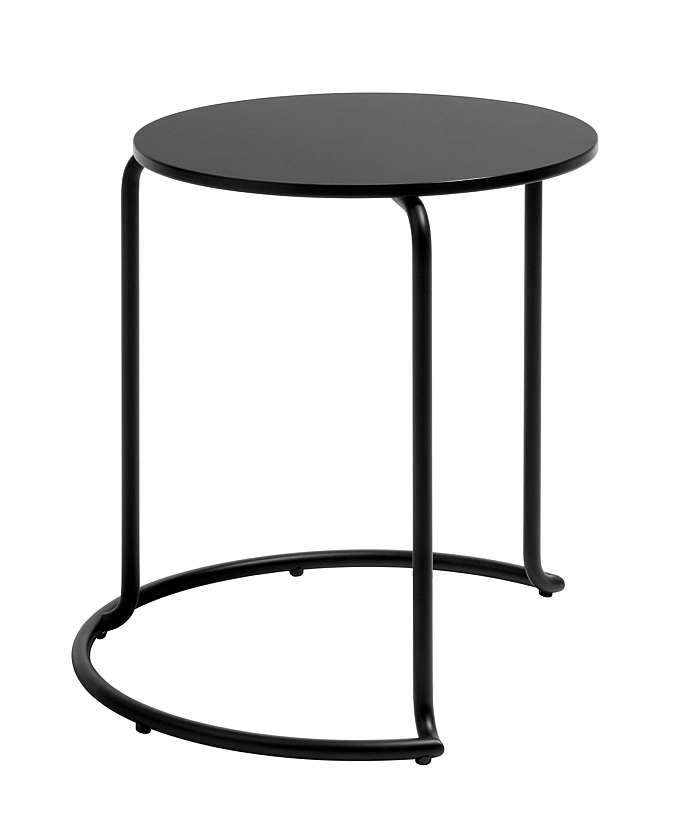
Although after their marriage the office was still formally named after Alvar alone, albeit the much less grandly titled Alvar Aalto & Co., by all accounts Alvar and Aino worked as equals, all projects being undertaken as, and understood as, joint projects, and in the early years for all joint furniture and interior design projects; as with any young architects starting out, commissions for buildings take time to be acquired, and so Aino and Alvar initially worked on small commissions including, and amongst others, the remodelling of six local churches, a contract which saw them develop all manner of liturgical accoutrements, and also developing the interior of the Seurahuone Cafe in Jyväskylä9 and the furnishing of rooms for the Häme Students Society in Helsinki, the latter two projects featuring predominately furniture of a very neoclassical style, if with a reserved, toned down, formal expression. And also employing interpretations of vernacular items; specifically an interpretation of a Windsor Chair in the Seurahuone Cafe and a rush seated, ladder backed chair for the Häme Students Society, the latter being described by Igor Herler as based on a Latvian model10, but which also has clear parallels to the Italian chairs Kaare Klint used as the model for his chairs for the Bethlehem Church Copenhagen in 1936.
And while the closeness of the joint cooperation, coupled with some equivocal record keeping, means that today it is neigh on impossible to fully discern who was responsible for what, as Herler notes, "it is difficult when studying the drawing materials from that period, to come to any other conclusion than that Aino's share in the interior design work, particularly in these early years, must have been quite decisive."11
A decisive share of the interior design work Aino maintained as the Aalto architectural projects became ever bigger.
While most available evidence tends to indicate that Alvar was primarily responsible for the architecture of projects such as, for example, the Paimio Tuberculosis Sanatorium, the Jyväskylä Workers Club, or Viipuri Library, that same available evidence tends to an understanding that Aino unquestionably contributed to the architecture, was very much involved in the discussions and considerations concerning the buildings' development and genesis, and something neatly alluded to in a postcard Sigfried Giedion sent to Alvar after receiving copies of the plans for Paimio, "one senses your (or Aino's?) hand down to the very last cliché!" he wrote approvingly, and, one presumes, with inside knowledge of the studio's methods and practices.12 But for all the available evidence tends to an understanding that Aino's primary involvement appears to have been developing and designing the interiors, the furniture and furnishings.
Spheres of activity that Aino Aalto13 increasingly made her own from 1935 onwards following the establishment of Artek; a company which although in many regards established by Aino and Alvar to produce and market the increasingly popular Aalto moulded plywood chairs, was also a company established as a platform for the dissemination of the Aaltos' understandings of interior design; and a company for whom from the outset Aino Aalto served as Head of the Design Office and thus as the guiding force behind the development of Artek's furniture and interior design positions, approaches and expressions. And with Aino Aalto very much an active guiding force; Kaarina Mikonranta noting of the pre-War Artek projects that existing Aalto furniture was preferentially used, however if nothing appropriate existed Aino would design that missing something.14 And in doing so developed an extensive and varied portfolio of furniture designs and interior solutions. A state of affairs which reminds very much of the post-War approach of the Knoll Planning Unit, where Florence Knoll would primarily use objects from the Knoll portfolio, but if nothing appropriate was suitable for a given situation Florence would design that missing something. And in doing so developed an extensive and varied portfolio of furniture designs and interior solutions.
One key difference being that whereas Florence Knoll's designs, largely, remained one-offs, or perhaps better put, became part of an archive of objects that the Planning Unit could and would use if appropriate, according to Mikonranta, the furnishings Aino Aalto created "would also become standard models produced and sold by Artek".15 Which poses several questions about the contemporary Artek portfolio; or put another way, that while one clearly wouldn't expect to find all the furniture Aino Aalto designed post-1935 in the contemporary Artek portfolio, finding nothing is questionable.
Amongst the many, and varied, interior design projects Aino Aalto guided in the guise of Artek one finds numerous important Aalto architecture projects, including, and amongst many others, offices for the Sunila Pulp Mill in Kotka on Finland's southern coast, the interior design of the Baker House dormitory building at the Massachusetts Institute of Technology in Cambridge, Massachusetts, and, and perhaps most famously, the so-called Villa Mairea in Noormarkku. And projects for which Aino Aalto also regularly designed the requisite lighting, the pendant lamps, for example which Aino Aalto designed for Villa Mairea remaining, unlike her furniture, part of the contemporary Artek portfolio.
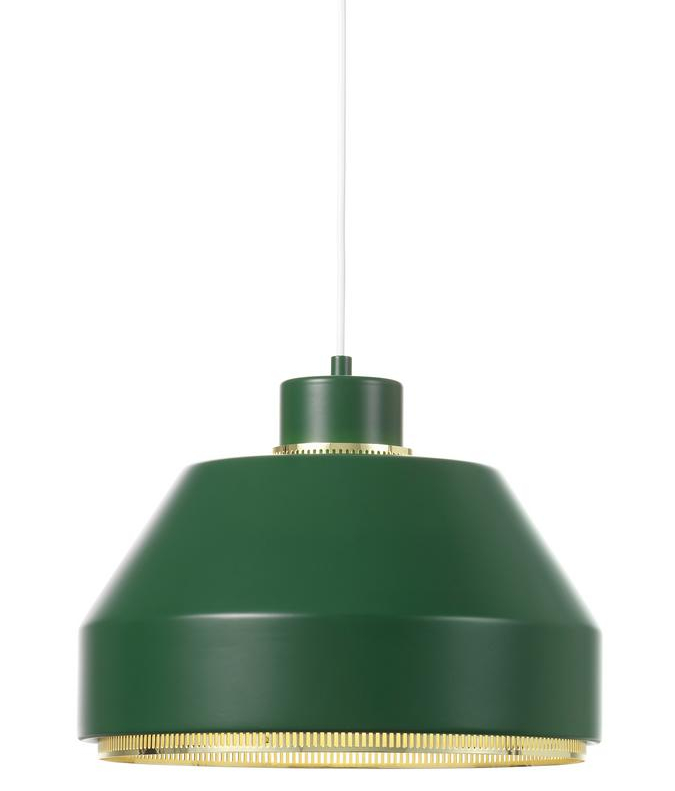
In addition to contributing to the Aalto architectural office projects and designing interiors, furniture, furnishings and lighting for Artek, Aino Aalto was also active as a glass designer and textile designer; the former, arguably, most popularly with her Bölgeblick press glass collection, a design which arose in context of a 1932 competition organised by the Karhula-Iittala glassworks, a collection which entered production the same year, which in 1936 won a Gold Medal at the Triennale di Milano, and which is still in production today. In context of textiles, Aino Aalto is known to have worked in a number of genres and materials over the course of her career, amongst the most interesting projects being, for us, a series of printed textiles developed in the late 1930s in collaboration with Yhtyneet Villatehtaat, a textile manufacturer based in Hyvinkää, and which in their use of repeating natural, floral, motifs remind in certain regards of the textile patterns Arne Jacobsen and Joanna Møller realised in the 1940s, and certainly can be considered as precursors of a typology of printed textile that would become more popular post-War.16 While in context of Aino Aalto, Artek and textiles it is also interesting to note that, instigated by Aino Aalto, Artek sold a collection of carpets woven in Morocco, and thus an echo of a trade Eileen Gray had in many regards pioneered in the 1920s in context of her short-lived shop/atelier Jean Désert.17
And Moroccan carpets Aino Aalto had, arguably, first been introduced to at the 1935 World Expo in Brussels18, and thus on one of the numerous trips through Europe, and also to America19, Aino and Alvar undertook in the 1930s and 40s. Trips which in addition to seeing the Aaltos visiting the new, and many older, architectural delights and horrors of their destinations, also saw them visit retailers of their furniture designs, institutions such as, and amongst others, Metz & Co. Amsterdam, Stylclair Paris or Wohnbedarf Zürich, and which thus allowed them to not only experience first-hand how their products were presented and received, but also allowed the Aaltos to see what others were doing, to experience for themselves first-hand works by the likes of, for example, Gerrit T Rietveld, Marcel Breuer, Le Corbusier or Otti Berger20, that otherwise, arguably, they would only have known through magazines. The furniture trade fair as such not yet existing.
And trips which Renja Suominen-Kokkonen argues were important in laying the foundation of what became Artek21, which, if one so will, played a key role in informing and developing Aino Aalto's positions to and understanding of design, certainly interior design. Including the start of an obsession with zebra prints.22
In 1941 Aino Aalto became Managing Director of Artek following the death of Nils-Gustav Hahl, a fellow Artek co-founder and who had served as Managing Director since 1935; in 1942 Aino Aalto joined the board of Architecta, an association of female architects which largely evolved from Tumstocken, and which stood as a counterweight to the male dominated Finnish Association of Architects, amongst whose leading members at that time was a certain Alvar Aalto, and an association who sought to improve the position and situation of female architects in Finland; in 1946 Aino Aalto was diagnosed with cancer. A, at that time untreatable cancer, but which Aino Aalto didn't let interrupt her activities: in 1947 she attend a Congrès Internationaux d’Architecture Moderne, CIAM, meeting in Switzerland, in 1948 she travelled to Italy with Alvar and oversaw the organisation of an Aalto exhibition in Copenhagen.
Aino Aalto died in Helsinki on January 13th 1949, aged just 54.
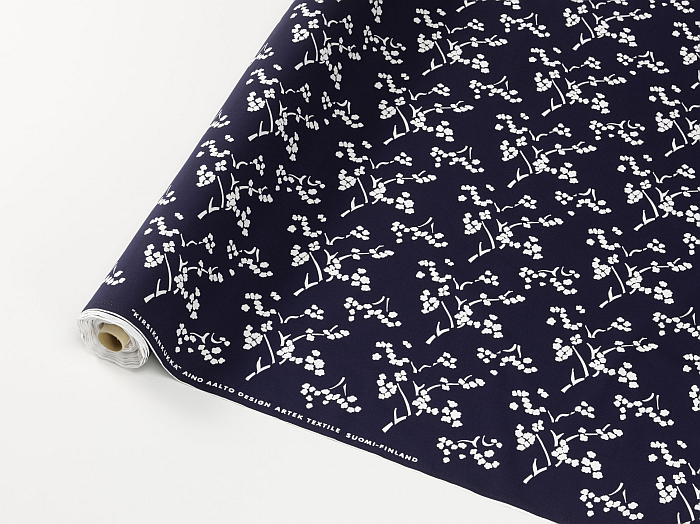
Active, and successfully so, as an architect, interior designer, furniture designer, textile designer, lighting designer, glass designer and entrepreneur, Aino Aalto today is largely the wife of Alvar. And occasionally little more than a muse.
Which poses the very obvious, and important, question, why? How? Why?
While, and as with so much in life, there is no easy and certainly no single answer:
One answer can almost certainly be found in the timing of her death. Not only at a tragically young age, an age where many architects and designers are just beginning to flourish, but an untimely moment in history, a moment that denied Aino Aalto a post-War biography, denied her the opportunity to develop on that which she had achieved inter-War, to build on those understandings and positions she had developed in the course of the 1930s and 40s, to translate her functionalist modernist understandings for a new age and in a new context, and thereby to establish her place on design's helix. And which thus leaves Aino Aalto as a component of a co-joined inter-War biography, a biography which then was one of equal partners, and which in many regards sought to establish the name Aalto as a brand rather than confirm the identity of, far less differentiate between, the individuals. Yet today is a joint inter-War biography that is popularly, and largely unquestioningly, understood as being Alvar.
Two answers can possibly be found in Alvar. By all accounts Alvar rarely, if ever, talked of Aino after her death, and in not doing so was, we'd argue, complicit in the fading of her memory, and thereby in the incomplete understanding of her contribution to the (hi)story of architecture and design we have today. A state of affairs which reminds very much of Mies van der Rohe's silence on Lilly Reich following her untimely death, and which in both cases raises the question why? For all in context of the Aaltos against the background that throughout the decades of their cooperations they existed as Aino and Alvar; for example, as Giedion notes, throughout the 1930s and 40s all Aalto works and Aalto exhibitions were signed and staged as "Aino and Alvar Aalto".23 In that order. And regardless of whom had contributed most. And while only Alvar Aalto knows the full reason for his silence, one possible explanation could be located in the fact he remarried in 1952. We weren't there, we don't know, and we're certainly not pointing any fingers; however, in 1952 Alvar married Elsa Mäkiniemi24, an architect who had joined the Aalto practice in 1949, and who took up a very similar role to Aino in the Aalto brand: running Artek and contributing to architectural projects. And that, as with Aino, as an equal of Alvar. And that without any apparent mention of Aino. As we say, we're not pointing fingers or making accusations, apart from a natural aversion to such, we simply do not have enough hard facts.25 But for us a better understanding how the Aalto and Artek brands were positioned post-War, how the Aalto and Artek narratives were staged and developed in the post-War context, and of what, and why, Alvar did and didn't do in context of maintaining Aino's legacy26, is important to better understanding why and how Aino and Alvar became Alvar.
Three answers can possibly be found in Aino. By all accounts Aino and Alvar were the classic chalk and cheese partnership: Alvar spontaneous and affable, Aino much more reserved and down to earth. And as Giedion, a man who'd known the couple since the 1920s, noted shortly after Aino's death, "we know that she had her quiet say as an architect at all stages of [Alvar's] work and life. She never appeared in the foreground or admitted what had really been designed by her. She was always at work behind the scenes..."27 Had Aino placed herself a little more front of house, we would have a much better understanding of her today. And that not just of Aino Aalto architect and designer, but of Aino Aalto businesswoman: by all accounts Aino was largely responsible for the running of the Aalto architectural office, she was the one with the better head for figures, more probable understanding of finances, and the firmer grasp on practicalities. On reality. And was also the much better drawer, thus was responsible for completing many of the draughts and blueprints, of bringing the detail, arguably the scales and proportions, to the visions. Yet because she remained in the background, much most all of that gets lost in contemporary understandings of Aino and Alvar.
Four answers can almost certainly be found in a combination of one, two and three answers coupled with a near exclusive post-War focus on Aalto architecture, and which has generated a veritable library of popular Aalto literature in which Aino plays next to no significant role. A watering down effect in the continuum of (popular) architecture and design publishing meaning that with each new Aalto volume Aino's role becomes ever less significant, and Alvar becomes ever more a synonym for Aino and Alvar. And one that is rarely questioned.28
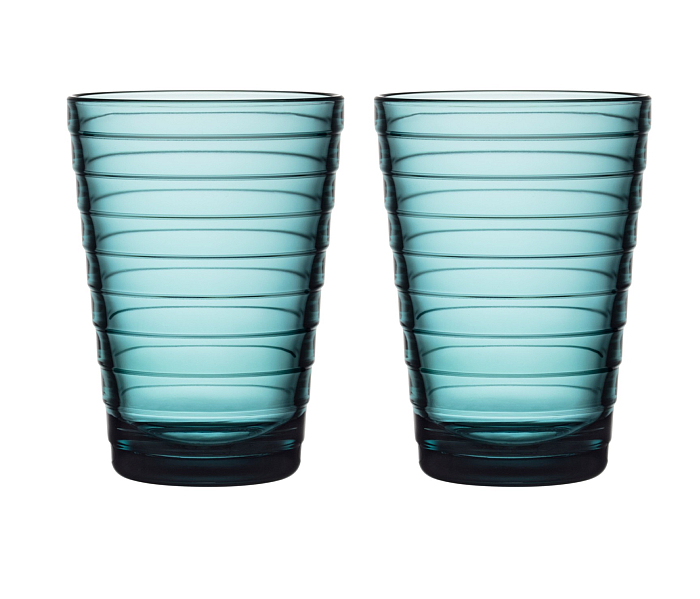
Five answers can almost certainly be found in the contemporary understanding of Artek as a furniture manufacturer, for all as a manufacturer of furniture assigned to Alvar Aalto29, when initially Artek was much more an interior design atelier. An interior design atelier (predominately) based on Aino Aalto's positions and understandings. And an interior design atelier which in addition to contributing to various Aalto architectural projects also developed its own projects, and for all projects independent of Alvar, or perhaps better put not directly linked with Alvar, projects in which Aino played the primary role Alvar played in architecture projects. Projects which post-War were, arguably, skipped over because they had only little relevance to the Alvar Aalto biography. Yet which are of fundamental relevance to the Aino Aalto biography.
Projects such as, the interiors developed for two small, working class homes realised in context of the 1939 Helsinki Housing Fair and which make use of the furniture, for all the sofas Aino designed, as components of the composition rather than as purely an item of furniture, sofas which as Kaarina Mikonranta notes, wouldn't become the norm in Finnish homes until the 1950s30 and projects which reflect Aino's 1935 statement that through Artek, "we aim that the furniture industry will serve social aims, producing useful, affordable and beautiful furniture that will suit every small home."31 That she added "although the taste of the masses is quite difficult to steer" indicating that Instagram still hadn't reached Finland in 1935.
Projects such as, the furniture, furnishings and interior of several children's homes Aino developed, in some cases Aino also designing and developing the buildings themselves, and which include amongst a great many other designs, a combination bed-bench which has all the geniality, joy and unwavering honesty of the settle bed, but at a much smaller scale. And represents not only a very keen understanding of the daily practice and spatial realities of such institutions, but also one of the most satisfying and logical re-imaginings, re-workings, of the collapsible camping bed. An understanding that the solution exists, one just has to identify them and, where necessary, retune them. Something very playfully underscored in Aino's ca 1938 garden lounger that is clearly a horticultural wheelbarrow.
Projects such as, the 1944 exhibition Vi bo i friluftstaden - We live in the outdoor city - held in Malmö and which saw Aino develop the interior of a "home of 4-5 rooms with a garden terrace"32, and where particular note was apparently made by the press of Aino's use of inbuilt furniture, and of it as being something new33, And while it may have been new for 1940s Sweden, it was elsewhere old, had been part of, for example, Maragrete Lihotzky's approach in context of her early 1920s work for the Viennese Siedlerbewegung, and is a solution that can also be found elsewhere in 1920s approaches to developing meaningful contemporary interiors; in addition the Malmö furniture appears to be when not modular than certainly variable.34 And as such can be understood as an example of Aino Aalto's understandings and expression of a functional interior.
Projects such as, the Aaltos' own home in Mukkiniemi to the north of Helsinki, not technically an Artek project per se but one realised in 1935/36 and one in which Aino, and one presumes Alvar, was/were able to freely express her/their ideas, including ideas on the use of flowers, carpets, drapery and colours. And Neoclassical dining chairs bought in Italy by Alvar and Aino on their honeymoon, but which they retained amongst all their more contemporary furniture in their contemporary home, and thus created a collage, a word we use deliberately, which echoes that which Charles and Ray Eames would develop a decade and a bit later in Pacific Palisades, Los Angeles. And that much to the shock of many of the Eames' contemporaries who couldn't understand how you could place blankets, cushions and folk art in a Modernist house. Contemporaries who may have been aware of Alvar Aalto, but clearly not Aino Aalto.
Projects such as, the above, and a great many more which allowed Aino Aalto to not only express and demonstrate that which Renja Suominen-Kokkonen very pleasingly refers to as a "minimalism, the simple solutions of design, a certain economy of forms and the social orientation"35 in her work, but also to express her understandings of the humanising of functionalism that is so elegantly encapsulated in the Aalto moulded plywood chairs, and thereby a humane aspect that in many regards lay at the heart of International Modernism but which in many of the Germanic/Central European examples gets lost in an overly dogmatic, an overly scientific, realisation and expression.
And projects for Artek which thereby enabled Aino Aalto to define functionalism as more than technical and a home as more than a living machine.
Yet today Artek is popularly understood as a furniture manufacturer.
And approaching a better understanding of Aino Aalto, we'd argue, requires a better, more complete, understanding of not only Aino Aalto's work for and with Artek, but of pre-War Artek. Of understanding pre-War Artek as a near synonym of Aino. With the acceptance of the understanding of the closeness of Alvar and Aino's cooperation and all the consequences that has for drawing conclusions from the available evidence.
Yet regardless of the reason why, the contemporary popular understanding of Aino as the wife of Alvar is unfair and unjust.
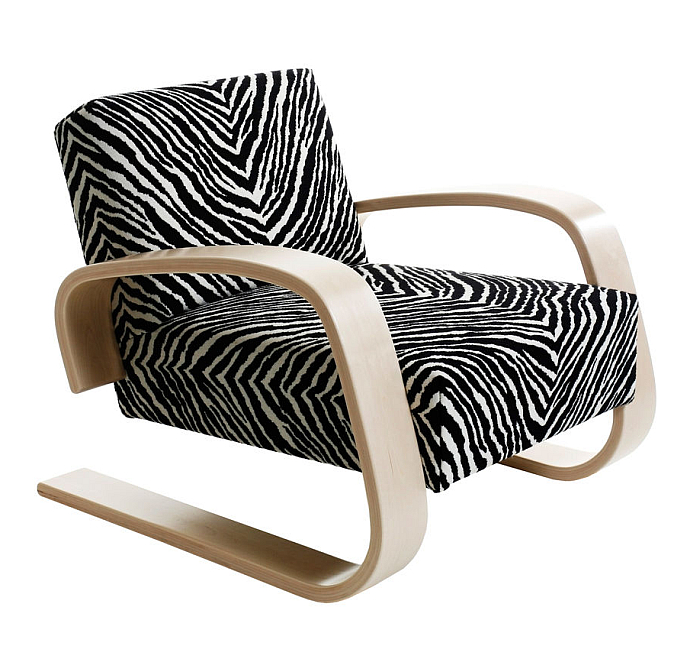
When Aino Marsio was a student the syllabus at the Helsinki University of Technology was still very traditional, still largely focussed on classical architectural understandings and expressions. Similarly the first known furniture designs from Aino Marsio find themselves very much rooted in centuries past, if with an undeniable striving for a more contemporary expression36, and when, for example, Igor Herler notes of a dining room ensemble realised by Marsio in 1922 in context of the annual exhibition of the Finnish Society of Crafts and Design as being "a rather ordinary example of "Normal Classicism""37, we don't understand that as a criticism, but rather as a simple confirmation of a young designer finding their voice.
A voice Aino, alongside Alvar, found in the course of the second half of the 1920s, and which in their projects of the 1930s and 1940s found not only an increasingly confident and stable articulation, but also increasingly understood its raison d'etre.
First, arguably, through the Paimio Tuberculosis Sanatorium for which Aino not only designed the furniture for the staff apartments, but also, and amongst other objects, the tubular steel beds which not only remind that Alvar and Aino did make use of tubular steel, but are the most pleasingly simple and logical of beds for such an institution. But for all her myriad projects for Artek offered Aino the freedom and opportunity to design furniture, furnishings and interiors in context of her understandings and positions. With her voice.
An opportunity and freedom Aino Aalto knew to accept and exploit.
And which saw Aino Aalto develop over the course of her all too brief career a canon of work, a portfolio of furniture designs and interior solutions, a manifesto if one so will of the relationships of space, objects, materials, sensuality and the user, which helped redefine furnishing, furnishings and interiors; and which in many regards enabled, through its more humane expression, many of the ideas of the inter-War decades to become popularly accepted and in doing so enabled a further development and evolution of understandings of furniture, furnishings and interiors.
And which today, if properly understood as the positions and understandings they embody rather than the objects they are, can still allow us to "create hitherto more practical and more comfortable homes" in ways other than before.......
1Aino Aalto, Yhteiskunnallisista kysymyksistä ensimminen: miten aumme?, NP 6/1936 quoted in Ulla Kinnunen, Aino Aalto, Alvar Aalto Museum, 2004 page 129
2Three of the children died as infants, ten survived.
3When Aino was born Finland was a semi-autonomous Duchy of the Russian Empire, in 1906 a rush of Finnish nationalism saw many Finns change their Swedish and/or Russian sounding surnames to Finnish variations.
4Ulla Kinnunen, Aino Aalto, Alvar Aalto Museum, 2004 page 209
5see Renja Suominen-Kokkonen, The fringe of a profession. Women as architects in Finland from the 189s to the 1950s, Suomen Muinaismuistoyhdistyksen Aikakauskirja 98, Helsinki 1992 page 29ff
6Ulla Kinnunen, Aino Aalto, Alvar Aalto Museum, 2004 page 115, see also photo on page 114
7We can find no reason why it took Aino Marsio six and a half years to graduate when the normal duration would have been four, and so presume that the numerous conflicts and wars of the period interrupted her studies. But there may have been other reasons.
8Göran Schildt, Alvar Aalto. The early years, Rizzoli, New York page 126 Well worth noting how infrequently Aino Aalto is mentioned in Schildt's telling of the early years......
9The commission also included external and structural alterations.
10Igor Herler, Early furniture and interior designs in Juhani Pallasmaa [Ed.] Alvar Aalto Furniture, Museum of Finnish Architecture, Helsinki, 1984 page 30ff Again the title of the book is very telling. Aino is mentioned inside as a furniture designer. But its Alvar Aalto Furniture.....
11ibid page 29
12Eeva-Liisa Pelkonen, Empathetic Affinities. Alvar Aalto and his Milieus, PhD Thesis, Columbia University, 2003 Footnote 22, page 178
13Throughout her life Aino appears to have used the names Aino Aalto and Aino Marsio-Aalto. Because it is the more commonly used form we stick here with Aino Aalto, although we suspect that Aino Marsio-Aalto is formally more correct. And we also regularly refer to Aino Aalto as Aino rather than Aalto, which isn't that condescending practice of calling females by their forename and males by their surname, but simply to differentiate between Aino, Alvar and the all-pervasive brand Aalto.
14Ulla Kinnunen, Aino Aalto, Alvar Aalto Museum, 2004 page 125
15ibid
16see, for example, Ulla Kinnunen, Aino Aalto, Alvar Aalto Museum, 2004 page 134ff
17The surname "Désert" was a reference to the deserts of North Africa, arguably for all Morocco, and where Gray regularly travelled. The forename "Jean" beecause it was understood that a shop run by a man was likely to be more successful. Even in a time and place as apparently cosmopolitan and liberated as 1920s Paris.
18see Aino Marsio-Aalto’s Diary, 1931–36 available via http://bgcdml.net/artek/diary.html (accessed 25.01.2021)
19During the so-called Winter War between Finland and Russia in 1939/1940 Alvar Aalto served as a propaganda officer in the Finnish Army, no honest, and in which context spent time in America. Aino and their children joining him between March and November 1940. Aino clearly remained active during her time in America, including designing an unrealised house project for a Helmi Halonen O'Neal see Ulla Kinnunen, Aino Aalto, Alvar Aalto Museum, 2004 page 64
20On their trips the Aalto also placed orders for much of what they saw, including works by Berger for Wohnbedarf, with whom she cooperated after her departure from Bauhaus, and which tends to indicate the quality of her work and the regard in which it was held.
21Renja Suominen-Kokkonen, Aino Marsio-Aallon matkapäiväkirja ja Artek, Tahiti 03/2014 Available via http://tahiti.fi/03-2014/tieteelliset-artikkelit/aino-marsio-aallon-matkapaivakirja-ja-artek/ (accessed 25.01.2021)
22Aino apears to have first spotted zebra prints in Stylclair Paris in 1935, and obviously liked what she saw. Why, we no know, but we are we curious to know..... see Aino Marsio-Aalto’s Diary, 1931–36 available via http://bgcdml.net/artek/diary.html (accessed 25.01.2021)
23Sigfried Giedion, Space, time, and architecture; the growth of a new tradition, Harvard University Press, 3rd edition, enlarged, 1959, page 605. Or the exhibitions were staged as Aino and Alto Alvar when the Aaltos were responsible for them, the 1938 MoMA New York exhibition Alvar Aalto: Architecture and Furniture being a notable, and important, execption. Aino is mentioned but once in the catalogue which notes, without an apparent sense of irony, embarrassment or self-reflection: "1925 Marriage with architect Aino Marsio; all works after this date are in collaboration with Mrs. Aalto." Yet the exhibition covering the period from ca 1930 i.e. after that date, is only about Alvar. And the marriage was 1924. see Architecture and furniture: Aalto, Museum of Modern Art, New York, 1938 www.moma.org/calendar/exhibitions/1802 And it is not the ony example of the MoMA airbrushing female creatives out of joint oeuvres, we've previously commented on how their 1947/48 exhibition Mies van der Rohe completely ignored Lilly Reich, and in 1973 they staged the exhibition Charles Eames Furniture from the Design Collection ...in 1973!!! One could argue that anyone looking to understand why so many prominent female architects and designers receive so little recognition, could do rthan start their research in the MoMA exhibition archive....
24Elsa Mäkiniemi became Elissa Aalto after the marriage with Alvar. And as Harry Charrington rightly points out Elissa Aalto is just as anonymous behind Alvar and Aalto as Aino, and that equally unfairly and equally unjustly. See Harry Charrington, Makings of a surrounding world: The public spaces of the Aalto atelier, PhD Thesis, London School of Economics, 2008, Volume 1: Text page 24
25Others do point fingers, see, for example, Fátima Pombo, Pauliina Rumbin, Aino Marsio-Aalto (1894-1949) the Architect of Interiors and Everyday Objects to Unveil, Architectoni.ca 2016, Online 4, page 48 (Available via http://ccaasmag.org/arch_online4.php (accessed 25.01.2021)
26Again here current realities have curtailed our research, and there are a couple of publications which could bring forth a little more light, but which are outwith our reach, we will however come back to the subject. One must also note that Göran Schildt writes that Alvar suffered an "almost pathological shock" at Aino's death which may have triggered memories of his mother's death when he was eight, and thus led to an inability to speak of Aino, and so we may be being hard on Alvar. And as we say, only he knows the hows and why for certain..... see Göran Schildt, Alvar Aalto. The early years, Rizzoli, New York page 71
27Sigfried Giedion, Space, time, and architecture; the growth of a new tradition, Harvard University Press, 3rd edition, enlarged, 1959, page 60
28In addition one must note that near all Aino Aalto wrote is in Finnish. Which isn't a language but rather a random collection of letters which a chosen few can translate into a language. And thus all her articles, letters, diaries, notes etc remained locked away from all but those chosen few. And while the odd quote does appear, that cannot replace being able to read the full document. And so we urgently need some translations of Aino Aalto's writings....
29Given the closeness of Alvar and Aino's joint cooperations, the question naturally arises as to the authorship of the moulded plywood chairs. A question which restrictions of time, space and closed libraries means we'll come back to another day
30Ulla Kinnunen, Aino Aalto, Alvar Aalto Museum, 2004 page 143
31Aino Marsio-Aalto, Sosialidemokraatti 14 May 1935. Quoted in Renja Suominen-Kokkonen (2004), p. 133; translation in Harry Charrington, Makings of a surrounding world: The public spaces of the Aalto atelier, PhD Thesis, London School of Economics, 2008, Volume 1: Text page 80
32Ulla Kinnunen, Aino Aalto, Alvar Aalto Museum, 2004 page 130
33ibid
34ibid We're not sure if it truly was modular furniture, nor how inbuilt furniture can be modular, can be varied in size once in use...but we'll investigate further, as soon as conditions allow.....
35Renja Suominen-Kokkonen, The fringe of a profession. Women as architects in Finland from the 189s to the 1950s, Suomen Muinaismuistoyhdistyksen Aikakauskirja 98, Helsinki 1992 page 82
36see Igor Herler, Early furniture and interior designs inJuhani Pallasmaa [Ed.] Alvar Aalto Furniture, Museum of Finnish Architecture, Helsinki, 1984 page 19 and Ulla Kinnunen, Aino Aalto, Alvar Aalto Museum, 2004 page 114
37Igor Herler, Early furniture and interior designs inJuhani Pallasmaa [Ed.] Alvar Aalto Furniture, Museum of Finnish Architecture, Helsinki, 1984 page 22
Happy Birthday Aino Aalto!